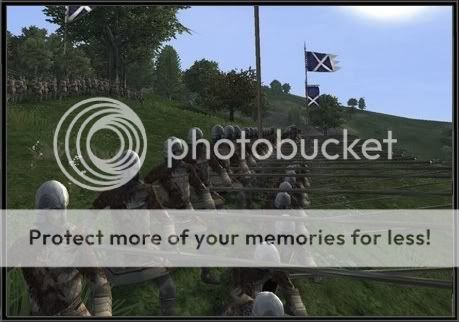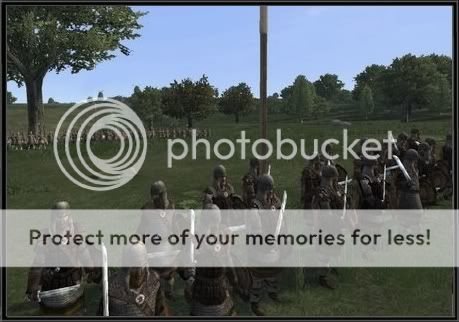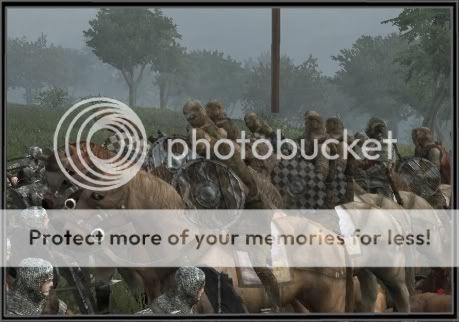-Faction Preview-The Kingdom of Fortriu can be considered the kingdom of the southern Picts and it believed to have been located around Srath Èireann (Strathearn) in central Scotland. Most of the Pictish tribes had amalgamated under the control two high kings by the 6th century AD, one in the north and one in the south. The Kingdom of Fortriu being the dominant southern Pictish kingdom.
-The Kingdom of Fortriu-
However by the beginning of the 600s it was the northern Picts under the high kingship of King Bridei and his court near Inverness who have the upper hand. Fortriu is currently under the control of the rí túatha (Lesser kings) from Strathearn. By the 680s Fortriu had become the main seat of Pictish royal power in Scotland, a development that would change the face of kingship in Scotland and the way of life for the Scottish people to come. For the first time in Scottish history, there was one political entity in Scotland, and it will also clear the way for the Kings of Dalriada to take over the kingship of Scotland.
It is up to you to become the over all Reges Pictorum (King of the Picts), bringing power and glory the Picts of Fortriu. And then maybe you will then have the strength to drive back the Scoti invaders of Dalriada and claim all of the lands of Scotland for the Picts.
Regions.
Fortriu will control central Scotland, despite the map, which would more accurately depict Cait, and will begin with four regions;
* Aghaidh Mhor – Aviemore, the Capital
* Obar Deathain – Aberdeen
* Druim Fada – Inverlochy
* Dun Monaidh – Dunstaffnage
Unit Roster.
* Freiceadan Ceannard - General's Bodyguard
In the tribal and sometimes treacherous Pictish society hidden in the Caledonian Highlands, a general, or any man of wealth, will want someone to guard them, the Chief's Warband are hand-picked from the best amongst Pictish nobles and warriors for the sole purpose of protecting their leader from harm. They are armed with superb equipment, including swords and targe shields.
* Daoscarshlua - Light Infantry
Life as a member of Pictish Society's peasant class is not easy or healthy. In times of war farmers are forced from their farms and grouped hastily, and if they are lucky, given some kind of simple weapon to fight with. Unsurprisingly, farmers are undisciplined troops who are better at fleeing than they are fighting.
* Daoine na Claidheamh - Light Infantry
The sword is an expensive weapon, and few are rich enough to buy one, but often when a man captures a sword in battle or thievery, he will keep that sword and pass it down through the generations, as a symbol of safety. Sword militia are the sons of those families fortunate enough to own a sword, who will take up the heirloom and defend the peace for which it was kept.
* Daoine na Gleann - Light Infantry
Common throughout Britain, spear-armed militias are commoners and peasants who have been called or forced into local warbands to defend settlements and bolster armies. Given some brief instruction and a long spear and shield, these units are useful in support roles for heavier and better units.
* Rastriagha - Light Infantry
Hadrian's Wall was built originally to keep the Picts out of Roman Britain, and such a great construction would not ever be made if there was not good cause for it, such as fearsome naked painted heathen death machines. Several hundred years later, the practice of going into battle naked has almost died out, but some Picts still follow the old customs, and it still has much the same effect on their enemy. The disadvantage of fighting naked is that these men have no armour to protect them, and so must survive on skill alone. Their primitive maces and targe shields at least give them something to defend themselves with, but it is their ability to frighten the enemy with a good charge that give Pictmen the edge in battle.
* Sleanaghta - Light Infantry
The spear is a weapon well suited to the poor Pictish society that struggles to compete with the other major powers, as it is cheap and easy to make, and requires only basic training. In large groups of spearmen the weapon's technique can be taken to another level, with many varied defensive formations requiring excellent discipline and training, but increasing the effectiveness of the unit. Pictish Spearmen specialise in the shieldwall technique, providing a solid wall against charges and making them a huge stopping force, adept at holding a line and defending the weaker units behind them.
* Dasachtagh - Heavy Infantry
Raiding parties of Pictish warriors have long plagued the Dal Riadans and Strathclyde Brithons, as well as countless monasteries that do not find favour with the local inhabitants. The riches taken from these places only help to fund further raiding parties, some made up of angry oeasants, and some of professional warriors, men who live to fight, and their skill and strength far surpasses that of any peasant who chooses to make enemies with their betters. Armed with longswords and targes, these men make a worthy addition to any army, and, if used rightly, can dominate the field. They are quite unruly, however, and may not wait for guidance before leading the attack.
* Heavy Warband - Heavy Infantry
The creme de la creme of the warrior class, Heavy Warband are men that fight for a living, and sustain themselves with the loot they claim. Often they will group together, thus forming a warband, and join an army at the bidding of a noble. Fiercely independent, these warriors do not normally fight cohesively, and as a result, are quite undisciplined. Armed with spears and a large, leather bound shield, as well as any other equipment they have acquired, Heavy Warband are a force to be reckoned with, and should be treated so.
* Dismounted Gai Aurmagh - Heavy Infantry
Often a Chieftain will have need of a strong, elite, professional force to help keep the unruly nature of the Pictish people under control. The Chief's Men are normally armed to the teeth, with the best equipment, full mail, spears and kite shields. They resemble modern Frankish soldiers more than they do their own culture, and this could be considered a good thing.
* Buachaill - Missile
Drawn from the local population, these are skilled hunters who have little experience in the ways of war. Whilst unarmoured and equipped with weaponry better suited to their trade, when called upon to engage the enemy in close quarters or in a skirmish, these men are capable of fighting with a determination that belays their lack of formal training.
* Cunta - Missile
The javelin is a common sight on the battlefields of Britain, though its popularity is gradually falling. The Picts have used this weapon for as long as their elders can recall, and make good use of their experience with the weapon. Pictish Javelinmen arm themselves lightly and make up for this with speed and skill. They are capable in combat, using their javelins to stave off the enemy, but should not be left to hold their ground, lest their lack of armour begin to take its toll.
* Saighdeoir - Missile
Whilst not having a strong tradition of archery like their southern Brithon neighbours, Pictish commanders recognise the importance of bowmen in modern warfare. Drawn from the highlands these men are armed with a standard shortbow and a one-handed axe for melee and if lucky enough some form of padded armour.
* Caledonian Marchan - Light Cavalry
This light cavalry unit is accustomed to raiding and skirmishing and can quickly be overcome in a prolonged melee with the wrong enemy. Equipped with tunics and a spear, this unit can run rings around your opponent and chase down skirmishers with ease.
* Gai Aurmagh - Heavy Cavalry
Often a Chieftain will have need of a strong, elite, professional force to help keep the unruly nature of the Pictish people under control. The Chief's Men are normally armed to the teeth, with the best equipment, full mail, spears and kite shields. They resemble modern Frankish soldiers more than they do their own culture, and this could be considered a good thing.
* Gaemornaghta - Light Infantry - Unique
Life as a member of Pictish Society's peasant class is not easy or healthy. In times of war serfs are forced from their farms and grouped hastily, and, in the case of Gaemornaghta, given a Gallic Pike and some brief training to protect themselves with. Gaemornaghta are undisciplined troops but they are useful in defense.
* Heavy Gaemornaghta - Heavy Infantry - Unique
The Picts are well known for their use of the Gallic Spear, a strange weapon for its time, as the pike was not yet in use. Its length gives the Gaemornaghta the ability to keep their enemies at a distance, and easily stop charges in their tracks. Should the enemy get too close, the Heavy Gaemornaghta are armoured enough to further withstand the offense, and often get the better of their attackers.
And here are the awaited screenshots of two of Fortriu’s units.
Heavy Gaemonaghta
Freiceadan Ceannard
-The Kingdom of Wessex-
Though on the forefront of Anglo-Saxon influence in Britain, and one of the largest kingdoms of the race, the lands of the Westseaxe, or West Saxons, have made little impact on British politics since having established their homeland from Dorset to the Upper Thames. They have remained relatively neutral, both politically and religiously, resisting the few attempts at invasion or evangelisation that have had the misfortune of disturbing Wessex's peace, and this neutrality has made Wessex arguably the most secure of the Anglo-Saxon kingdoms. The wheels of war, however, have been set in motion, with Mercian Aggression reaching its peak, and Christian Essex spreading its new found wings, borne on Rome's support. Perhaps it is time for the grinding of these wheels to wake the sleeping giant that is Wessex, and unleash its power on Britain.
Regions.
Wessex will control a large chunk of south-western England, and will begin with five regions;
* Wintoncaestir – Winchester, the capital, and home of the Royal family
* Oxenaforda – Oxford
* Caerloyw – Gloucester
* Dornwaracaestir – Dorchester
* Weithsea/Niwehafn – The Isle of Wight
Unit Roster.
A brief version of the unit roster, with only the unit names (it will be elaborated on in the future)
* Cyneweard
In the sometimes treacherous Anglo-Saxon society growing across Britain, a general, or any man of wealth, will want someone to guard them, the Cyneweard are hand-picked from the best amongst Germanic nobles and warriors for the sole purpose of protecting their leader from harm. They are armed with superb equipment, including swords and large, round shields.
* Ierthlings
Life as a member of Anglo-Saxon Society's peasant class is not easy or healthy. In times of war farmers are forced from their farms and grouped hastily, and if they are lucky, given some kind of simple weapon to fight with. Unsurprisingly, Ierthlings are undisciplined troops who are better at fleeing than they are fighting.
* Aexfierd
The short axe is a favoured weapon amongst the Anglo-Saxons, and Aexfierd bear the weapon proudly into battle in the defense of their towns. They are made up of peasants drawn from the farms and organised into militias, but are sometimes called into armies ready for war. Useful in supporting roles for heavier units, and for breaking the charge of the enemy with their shieldwall ability.
* Ceorlfierd
Common throughout Britain, Ceorlfierd and their like are commoners and peasants who have been called or forced into local warbands to defend settlements and bolster armies. Given some brief instruction and a long spear and shield, these units are useful in support roles for heavier and better units.
* Huscarls
Huskarls are those warriors who have fought their whole life for privelige and honour, and now have been chosen to defend the hall of their master. Theirs is a life of drinking and feasting, for as long as peace reigns, and the land remains prosperous. When war threatens their lifestyle, however, then these men will defend their luxuries with tooth and nail. No town shall fall as long as the Huskarls remain.
* Garmenn
In the early days of Anglo-Saxon presence in Britain, while they were employed by the Britons to help fight the Picts, the Germanic Races learned the Pictish method of protecting themselves from cavalry, and have made use of the long spear ever since. Its length gives the Garmenn the ability to keep their enemies at a distance, and easily stop charges in their tracks.
* Feaðacempa
Every army is in need of a cheap, but well armed spear troop to for the core strength of the army, as untrained peasants are too weak, and powerful warriors are unreliable and expensive to hire. The Feaðacempa, or foot soldier, fills that gap. They are drawn from the peasant class, but are kept in military service and professionally trained, as well as given decent armour befitting their role. Feaðacempa are spear and round shield armed men that can easily protect themselves and others from enemy attack. Best used supporting warrior units or protecting skirmishers.
* Heavy Warband
The creme de la creme of the warrior class, Heavy Warband are men that fight for a living, and sustain themselves with the loot they claim. Often they will group together, thus forming a warband, and join an army at the bidding of a noble. Fiercely independent, these warriors do not normally fight cohesively, and as a result, are quite undisciplined. Armed with spears and a large, leather bound shield, as well as any other equipment they have acquired, Heavy Warband are a force to be reckoned with, and should be treated so.
* Jutish Heavy Spearmen - Unique
The Jutes arrived with the other Germanic races after the fall of the Roman Empire, but only came in small numbers, and settled in the Isle of Wight. They were conquered by the West Saxons, and became a small vassal from which was supplied the elite of the Jutish troops. Jutish Heavy Spearmen are the troops from which the guard of the King of Weithsea is chosen. Spear armed troops with massive shields and partial mail, they outshine the undisciplined Heavy Warband, and can easily replace them in combat.
* Thegns
Thegns are minor landowners and form the aristocracy of Anglo-Saxon culture. Unlike later upper classes, however, Thegns and Ceorls pride themselves for their prowess in battle, and bravery is their most important trait. Thegns often attend the court of the King, and so are wealthy enough to afford full suits of mail, and elaborate shields and swords, making them a fearsome force on the battlefield. Thegns are independently capable of dominating a melee, and should not be held in reserve, as their use can often spell the end of any enemy infantry.
* Angelcynna
Though the English normally prefer to use the short axe, the larger, two handed version has gained popularity recently, due to its superior force, and the charge momentum it allows its wielders to take to their enemies' skulls. Angelcynna are the warriors who are well prepared to accept change, and have equipped themselves with looted or bought mail. They use their equipment and skill to wreak havoc on the frontline and break the formation of the opposition before the common troops advance.
* Fiscere
Drawn from the local population, these are mere fishermen who have little experience in the ways of war. Whilst unarmoured and equipped with weaponry better suited to their trade, when called upon to engage the enemy in close quarters or in a skirmish, these men are capable of fighting with a determination that belays their lack of formal training.
* Heavy Javelinmen
The javelin is a common sight on the battlefields of Britain, though its popularity is gradually falling. The Anglo-Saxons have used this weapon for as long as their elders can recall, and make good use of their experience with the weapon. Heavy Javelinmen arm themselves with more armour than their peasant counterparts and can prove very useful on the battlefield. They are capable in combat, using their javelins to stave off the enemy, but should not be left to hold their ground, lest their lack of discipline begin to take its toll.
* Sceatha
This light cavalry unit is accustomed to raiding and skirmishing and can quickly be overcome in a prolonged melee with the wrong enemy. Equipped with tunics and a spear, this unit can run rings around your opponent and chase down skirmishers with ease.
* Renweard
Heavy horsemen are uncommon amongst the majority of the Anglo-Saxon Kingdoms, but these warriors could be considered a primitive form of knights and are a natural development of the richer members of the warrior class. Armed with a short axe and large, round shields, Renweard follow the fighting style of the British Cedyrngeffyl. Though they have not the strength in charge of knights, these men are strong nonetheless, and often the final doom of light infantries.
* Brithon Raiders – UniqueBritain's native people are famed for their use of the horse, one of the great Gaius Julius Caesar's concerns in his observations on Brython warfare. Wessex has grown from its infant state and now assimilates many conquered Brithon Tribes, such as the Atrebatians, and the British who remain now fight for their overlords. The fearsome raiding tradition of the light British Horsemen is well known amongst the Anglo-Saxons, and Wessex's ability to harness it gives them an edge over their fellow Germans. Brithon Raiders are lightly armed, and often poor, because of their social status, but they are lightning fast, and effective at taking out skirmishers and other missile troops.
And here are some screenshots of Wessex’s unique units, to prove that we have at least got further than the concept stage of development for Wessex (all of the units, banners, etc. have been finished)
Jutish Heavy Spearmen
Brithon Raiders
The contributors to this particular preview are;
- Plonkdog, of course (unit descr and making the preview)
- Icedie of South, for the screenshots and all of Fortriu's units
- Macky, for the Faction descriptions and a lot of Pictish research
our dev-forum










 Reply With Quote
Reply With Quote

Bookmarks